Green architecture – Earthship Farmstead House, Virginia
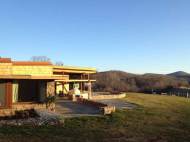 Nestled in the hillside of Virginia mountains, the Earthship Farmstead house received Passive House Certification in February 2013 and it is on track for LEED Platinum certification for homes. While it doesn’t represent a typical example of an earthship house, where people tend to use scrap material to build them, it is built on similar principles to minimize its environmental impact and it looks great.
Nestled in the hillside of Virginia mountains, the Earthship Farmstead house received Passive House Certification in February 2013 and it is on track for LEED Platinum certification for homes. While it doesn’t represent a typical example of an earthship house, where people tend to use scrap material to build them, it is built on similar principles to minimize its environmental impact and it looks great.
Designed by Kaplan Thompson Architects, the house complies with client’s requirements for a stylish, soft, natural modernism with a palette of white cedar shingles, local fieldstone, and quiet metal accents to harmonize with the colors and tone of the surrounding mountains.
Earthships are primarily independent buildings which rely on thermal mass and natural cross ventilation using chimney effect to control indoor temperatures. Earthship buildings are usually off-grid homes built with locally sourced and recycled material to minimize their environmental impact. These houses also tend to rely on local resources when it comes to water supply, large windows to maximize natural light and solar-gain during winter months.
The architects bent the floor plan to carefully fit the contours of the field. The slope of the hill faced east, so they extended the living and dining room out onto the crown of the hill, raising a broad bank of carefully shaded windows to the south to capture more sunshine during winter in order to capture more sunshine during winter.
Earthship Farmstead house is expected to use 90 percent less energy for heating than a typical house, and it could be heated on the coldest night of the winter with the energy of two hairdryers. Aside relying on Earth’s heat and isolation, the exposed surfaces are surrounded with R-30 slab, R-30 walls and R-40 to R-60 roofs. Makrowin windows and doors have triple glazing and thermally broken frames.
A small 1.5 ton Mitsubishi heat pimp system is used for complete heating and cooling of the house, and Energy Recovery Ventilator by Zehnder continuously supplies fresh air to the living spaces. A 12 kW photovoltaic array on the barn should supply all the energy the farm needs, making the house fully energy positive. It will be a tough, easy to maintain, comfortable and extremely cost effective house to live in (estimated $500 for heating per year).
The property is well supplied by well water, and all pumps and fixtures were carefully picked to ensure that the water use wouldn’t consume too much power generated by the energy systems. A large cistern stores all water from the roof for later reuse in the landscaping. The house has been designed to sit within the natural landscape, with an extensive green roof and native plantings.
Local, healthy and sustainable materials were specified throughout the project. The building is insulated with cellulose insulation and water-blown EPS, and there were strict limits on Formaldehydes and VOCs. All flooring is local white oak, the cabinetry is Virginia black walnut, and American Clay Paint is used throughout the project.

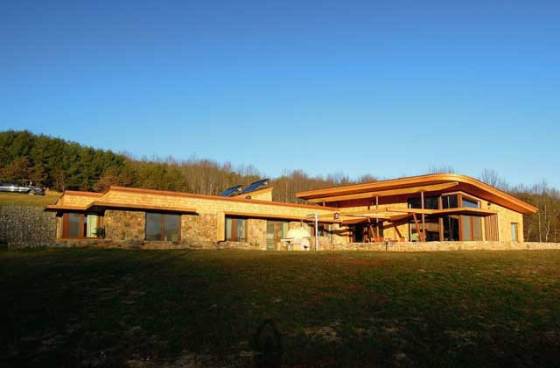
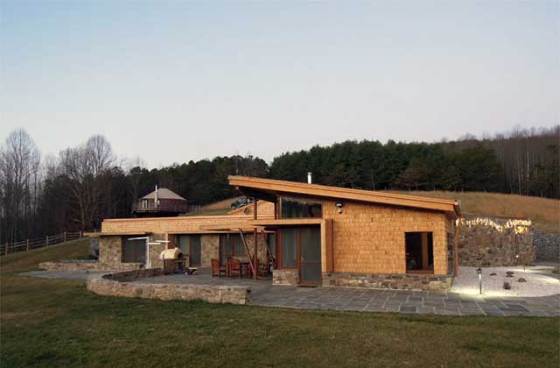
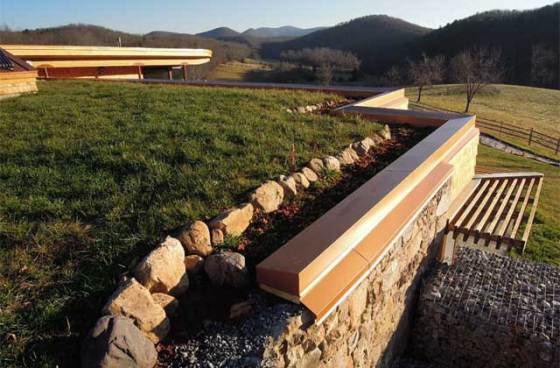
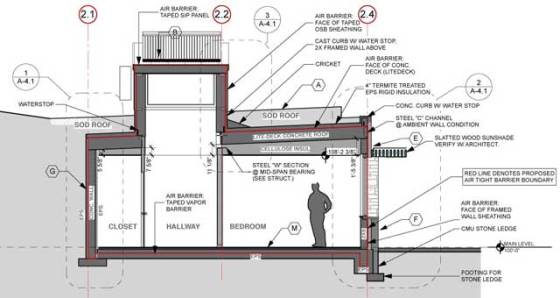
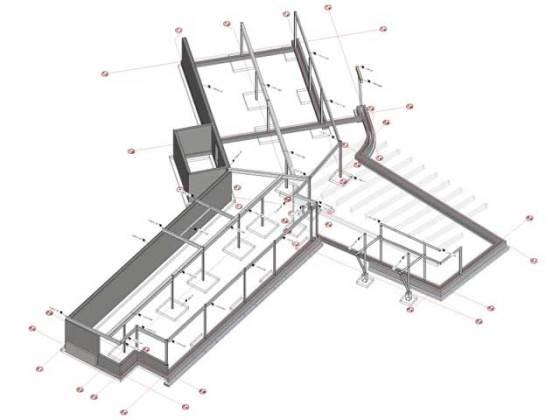








Great design.
Have a look at our earthship in South Africa and click on BLOG to see our progress and photos.
Where is this home located in Virginia? Are there others that we could possibly tour in Virginia? What was the approximate cost of building this home and how many bedrooms does it have? Thanks!
I’m also interested to know where the VA earthship is located. Looking at building one near Charlottesville.
Looks like this specific one was sold. $1.3mil in Stuart VA. Is there anything similar available or planned to be build in the VA?